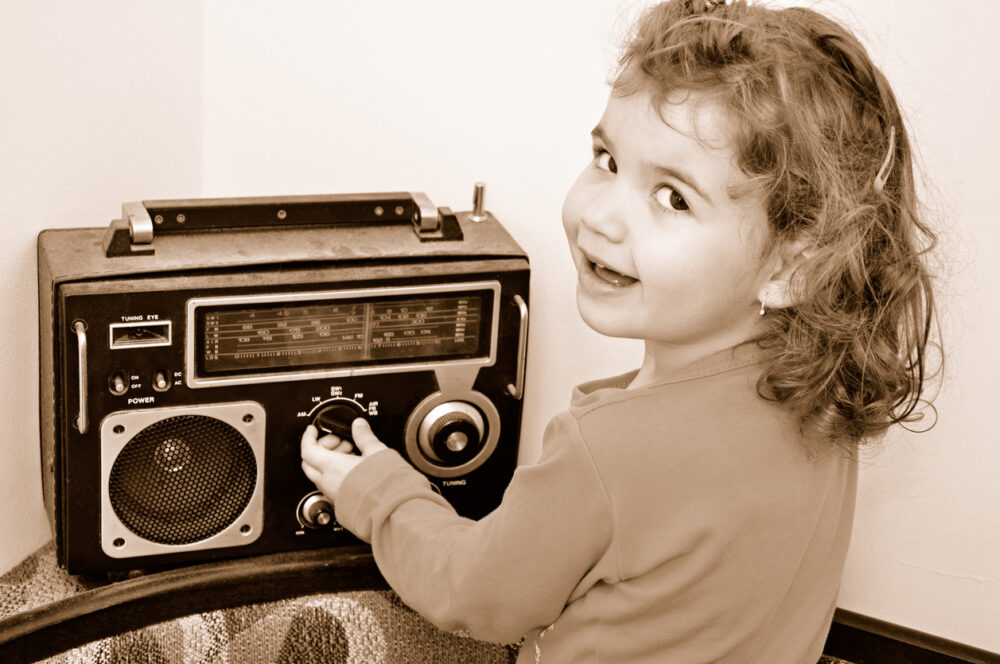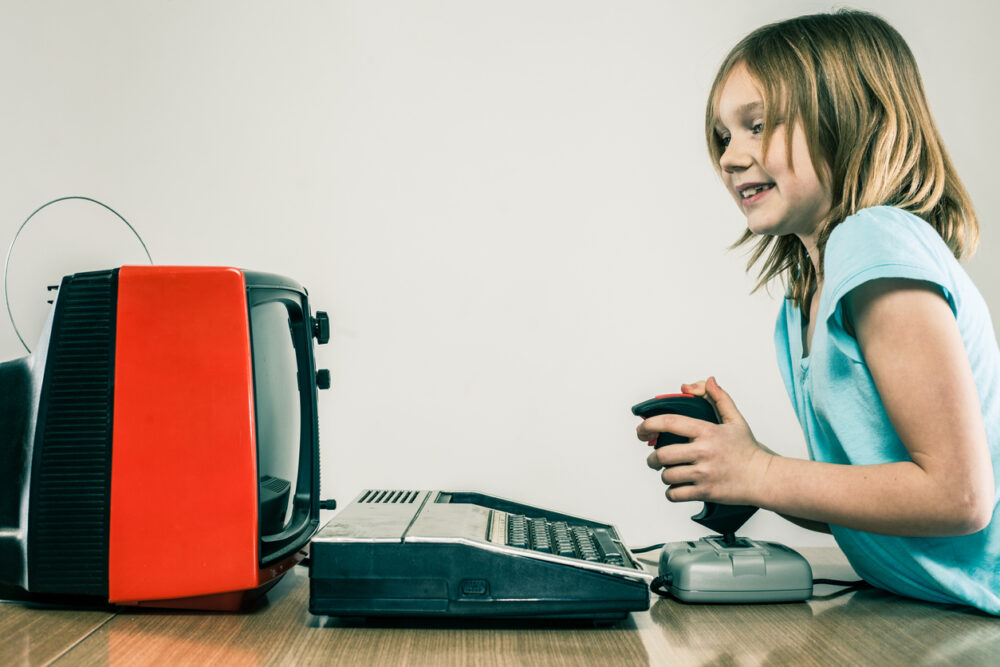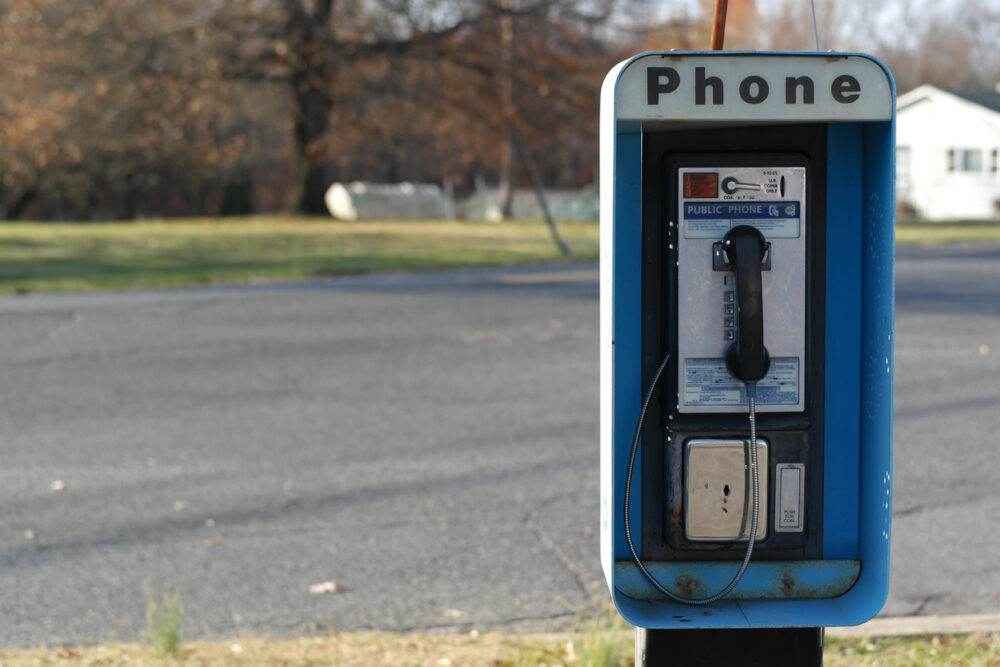A world existed where boredom couldn’t be cured with a screen tap.

There was a time when kids had to survive long car rides without cartoons, make actual plans instead of just texting “here,” and memorize phone numbers like their lives depended on it. Childhood wasn’t about charging devices or updating apps—it was full of quirky routines and strange limitations that now feel like relics from another planet. For anyone born before the 2000s, it all made sense. But for today’s kids? It might as well be ancient history.
These little rituals shaped how people interacted, waited, played, and even got lost. While smartphones have certainly made life more efficient, they’ve quietly erased the need for a lot of everyday skills and habits that once defined youth. The sense of freedom came with a bit of danger, and the fun was often found in figuring things out without a screen. These 13 things were completely normal back then—but to modern kids, they sound borderline ridiculous.
1. Calling your friend’s house and hoping their parents didn’t answer.

There was always a brief moment of panic when dialing a landline. You had no idea who’d pick up—mom, dad, maybe even a grumpy sibling. Asking, “Hi, is Jessica there?” wasn’t just polite, it was required. And if they weren’t home? You hung up and waited. No texting, no follow-up snap—just good old-fashioned patience.
This little interaction taught a whole generation about manners and human contact, according to Cassey Rakham at Buzzfeed. Today’s kids don’t even think about it. Direct messages mean you rarely have to interact with anyone else in the household. But back in the day, you had to speak clearly, be respectful, and maybe even endure small talk with a parent before getting to your friend.
2. Waiting for your favorite song to play on the radio so you could record it.

There was no Spotify playlist you could tap on demand. If you loved a song, you had to hover near your boombox with a blank cassette loaded and your fingers ready to smash that record button, as reported by Matt Bailey at Graphs About Songs. Timing was everything. Miss the first few seconds? You had to wait for it to come around again—which could take hours.
It was an art form, really. You learned to avoid DJ chatter and ads, and you’d feel victorious when you nailed a clean recording. It was a labor of love that made every mixtape personal. Today’s kids may have unlimited songs at their fingertips, but they’ll never know the thrill of capturing a song live on the air.
3. Memorizing phone numbers because you had no other choice.

You knew your home number, your best friend’s number, and probably your crush’s too. That knowledge was essential for calling payphones or reaching someone in a pinch. There was no “Contacts” list to scroll through—your brain was the database, as stated by Rachel Metz at The New York Times.
Today, most people can’t even recite their own partner’s number. That dependency on digital memory is convenient, but it means there’s a skill gap. Kids today wouldn’t last five minutes in a dead-battery emergency unless they’ve got someone’s number scribbled on their hand.
4. Getting lost and actually having to ask someone for directions.

Once upon a time, missing a turn meant you pulled over and flagged down a stranger or stopped at a gas station. That interaction often involved unclear landmarks like “turn where the old church used to be” or “after the third big oak tree.” Sometimes you’d just wing it with a paper map if you had one in the glove box.
GPS has made navigation foolproof, but it also erased an entire layer of real-world engagement. Today’s kids don’t just avoid getting lost—they avoid talking to strangers, navigating street grids, and using context clues to figure things out. That sense of direction came with experience, not Wi-Fi.
5. Watching cartoons only on Saturday mornings.

If you didn’t wake up early on Saturday, you missed it. There was no replay, no on-demand, no skipping commercials. You waited all week for that sacred window of cartoon magic. It was a mini-holiday every weekend, and kids planned around it like it was an unspoken ritual.
Streaming changed everything. Now you can binge every season in a day. But that made cartoons feel less special. Back then, you had to earn your screen time with patience, and that made every episode feel like an event instead of background noise.
6. Using an encyclopedia to finish a school project.

If your teacher assigned a report, you headed to the bookshelf and pulled out the matching volume. No search bar, no Wikipedia. Just pages of text and grainy black-and-white photos. You had to actually read—and understand—what you were looking at before you copied it into your notebook.
Research meant effort. Libraries weren’t just for silence; they were knowledge treasure chests. Today’s kids can Google any topic in seconds, which is efficient, sure—but they’ve never known the thrill of flipping through an encyclopedia to uncover facts like a real-life detective.
7. Picking up a disposable camera and hoping your photos turned out.

You’d snap a roll of film, drop it off at the drugstore, and wait a few days to see what you got. Every shot was a mystery. Was it blurry? Did someone blink? You’d find out later, and you had no choice but to live with the results.
Today’s instant photo editing makes every picture perfect, but it also takes away the charm. That surprise factor—the thrill of opening that envelope of prints—was pure magic. Kids now will never know the joy of holding a stack of freshly developed memories.
8. Blowing into video game cartridges to make them work.

If your Nintendo game froze or glitched, you didn’t rage quit—you blew into the cartridge, gave it a shake, and hoped for the best. It wasn’t scientific, but somehow it worked. That ritual was part of the gamer experience.
Modern consoles update themselves, fix bugs remotely, and barely need any maintenance. That’s great for gameplay but bad for stories. Every millennial gamer has a “blow-and-pray” memory. Kids today will never know that small act of problem-solving that felt oddly heroic.
9. Making prank calls using star-67 and a landline.

There was a time when a blocked number and a silly voice could entertain a group of kids for hours. Star-67 was the code to hide your number, and pizza places, neighbors, and even friends’ parents were fair game. Sure, it was immature—but it was also a rite of passage.
Caller ID and smartphones put a hard stop to that kind of mischief. Nowadays, prank calling is more likely to get you in trouble than laughter. It was innocent rebellion, and in some odd way, it brought kids together in shared secrecy.
10. Using payphones in actual emergencies.

Out of money and stuck somewhere? Find a payphone. You’d dig for quarters or call collect, hoping whoever answered wouldn’t hang up. Payphones were lifelines—and surprisingly reliable. You always knew where the closest one was, just in case.
Kids today might not even recognize a payphone if they saw one. But that device represented independence. It was freedom with a coin slot, and using it felt like your first brush with being responsible in the wild world.
11. Folding paper notes into perfect triangles before passing them.

Texting didn’t exist, so if you had something juicy to say during class, it went onto notebook paper. The way you folded that note—into a square, triangle, or origami masterpiece—was an art. And reading one without getting caught? That took skill.
Those notes got passed like contraband across desks, and every secret scribble felt sacred. It wasn’t just about communication—it was about bonding, flirting, and risking detention for the thrill of sharing something personal. Today’s kids will never feel that spark between the lines.
12. Renting movies at the video store and hoping they had your pick.

Friday night was all about going to the video store, wandering the aisles, and hoping your top choice wasn’t already checked out. If it was, you had to make do with something else—or wait until next weekend. That anticipation made movie night feel special.
Streaming now gives instant access, but that convenience erases the ritual. That neon-lit trip to the video store was an event, not just a chore. It was about browsing, compromising, and finding something new by accident.
13. Playing outside without constant check-ins.

Once school let out, kids went outside—and stayed there. Parents trusted the neighborhood, and check-ins weren’t scheduled every hour. You came back when the streetlights turned on, covered in dirt and full of stories.
Phones have made things safer but also more tethered. Kids today rarely experience that kind of freedom, that sense of self-reliance. It wasn’t always smart or safe, but it helped shape confidence and independence in ways a GPS tracker never could.
